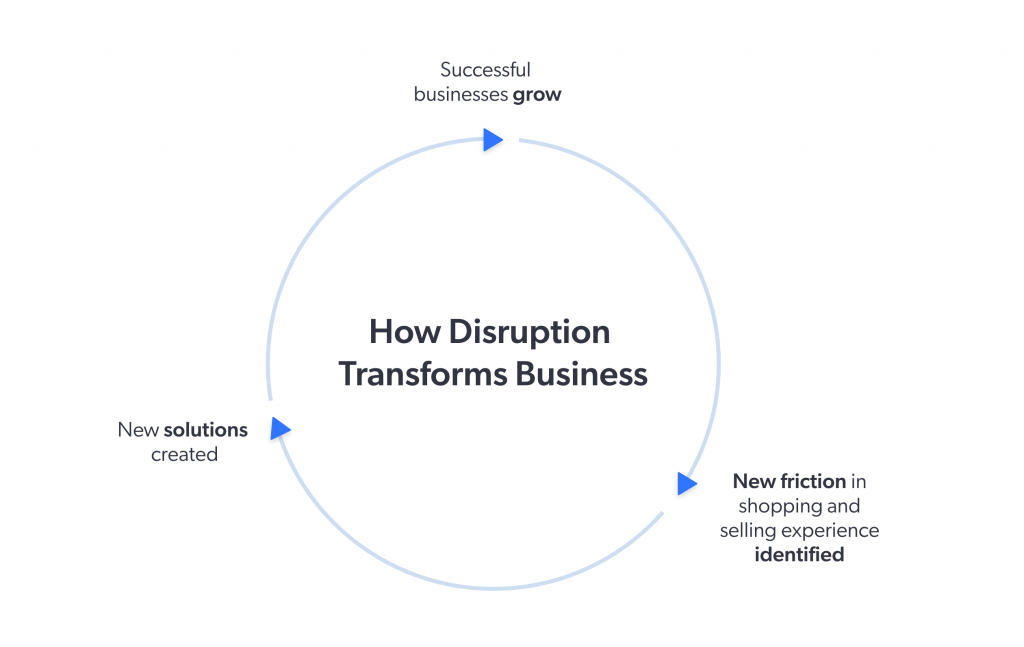By Miva | September 15, 2020

See why top ecommerce brands use Miva’s no-code platform to run
multiple stores, manage massive catalogs, and grow their revenue.
Core ecommerce principles open the door to greater freedom and flexibility when it is needed the most.
Physical retail shuttered for months. Lockdowns training the public to rely on digital for work and shopping. Businesses automating every possible part of operations. The learning curve for our new conditions has been steep, but not without reward. While transitioning to safer practices, ecommerce has seen an unprecedented boom during these most uncertain of times. Indeed, our industry’s primary tool—the ecommerce platform itself—has seemed perfectly engineered to meet the era’s exact challenges. This year, we are seeing a global case study in how challenges beget solutions. With so much at stake, this is the right time for all businesses to embrace digitalization to the utmost. Here’s why.
It makes sense that a business which cannot offer a smooth and effective shopping experience to its customers is not serving them. This year, friction has mainly centered on the physical experience—shoppers are unsure if it is safe to patronize physical stores, and when they get there, inventory is limited by delays and supply which cannot meet demand. We’ve all seen those empty shelves for everything from toilet paper to air conditioners. This is not just a pandemic-specific problem. It’s a failure of the complex coordination and communication it takes to stock and sell physical products to an in-person customer.
Point blank: the physical-only retail model, once the most natural and easy way to sell goods, is no longer able to solve for the natural pain points of shopping. This is a hard truth to accept, as physical marketplace shopping has informed the development of social interaction, economics, farming, and architecture for the majority of human history! We will always need to gather together and interact with one another in order to be happy and fulfilled, but going forward our shopping experiences must be digitally supported in order to work at all.
In the middle of the last century, the question facing physical retail was “how do we expand our footprint via real estate acquisition?” (see: Sears). By the end of the 1900s the question was “how do we master warehousing logistics to reduce overhead?” (Walmart has entered the chat). At the start of the 2010s, brick & mortar looked at Amazon and pondered, “how can we compete with data-driven poaching and monopolization of physical delivery networks?” (still TBD). The question today is far more stark: “How do we keep our in-person customers safe from harm?”
The ecommerce platform is the answer.
Part of the problem is the tendency to sort businesses into separate, hyper-defined piles, i.e. brick & mortar vs. e-seller, with nothing in-between. The gradual hybridization of previously discrete channels is not a new topic—we’ve been covering it here for years. Consolidating roles like “manufacturer,” “distributor,” and “marketer” into leaner, less-physical, all-purpose machines is wise from an operational/cost standpoint, but also as a competitive advantage in a rapidly morphing consumer landscape. Highly integrated, non-physical operations are by nature more nimble and responsive. And as always, the more you can control the many tendrils of your product’s journey from start to finish, the more ability you have to control your margin, to compete with Amazon, to act on what your customer tells you, and to guarantee your product’s safe journey into that customer’s hands.

The blurring of the line between B2B and B2C has emerged as a key strategic survival strategy given current conditions. For the entire past decade, wholesalers have been clamoring to provide online shopping experiences which were as flexible and aesthetically pleasing as consumer direct retail sites. Conversely, retail customers have increasingly expected the pricing and selection perks of wholesale shopping. Now, home shoppers need to buy staples in bulk, they need them to show up tomorrow, and distributors need direct access to as many new audiences as possible.
Again, it’s the ecommerce platform which allows these “blended” approaches to flourish. A storefront that reconfigures to the preferences of any given account is more than just a customer service hack to boost ROI. We can think of the platform as a translator which bridges gaps between totally different channels and customers by creating a coherent common tongue and allowing smaller, less specialized teams to manage an increasingly diverse portfolio of tasks.
Of course the heart of better shopping experiences and diversified channels is the product itself. 10,000 SKUs sourced from all over the world and bundled into complex pricing configurations before being shipped to thousands of accounts, each with unique payment terms? Yeah, we’ve got a tool for that. But in this environment, even a seller of “simple” products needs total access to a suite of data indicators and integrations with order, warehouse, shipping, and marketing automation systems, for a start. The “why” is simple: increase margins and stay competitive.
Can you move goods strategically to warehouses around the country? Can you increase efficiency at those warehouses, and follow up every single order with automated marketing and customer service? Can you avoid shortfalls and deadstock by running numbers on what your customers want before they click “Buy Now”? Can you use that same data to fine tune R&D and deliver a more dialed-in solution than the business next door (by “next door,” we mean a vendor two states or two continents over who is definitely using their ecommerce platform to undercut your sales at every opportunity)?
If not, it’s going to be a tough road ahead.
Big boxers like Best Buy and Target are leaning in the right direction with their suddenly ubiquitous hybrid online/curbside systems, which reduce physical risks and provide some assurance of availability. So far, it is working. Now, this is not going to be an appropriate solution for all holdout B&M, or online-only sellers. But the thought process is correct:
How do we take a sober-eyed view of the friction in today’s shopping experience and springboard from that into a novel solution for an evolving audience?
If you look at it like this, the friction is not quite as painful—it is merely an indicator pointing in the direction of something better. That’s the prognosis for physical retail during and post-COVID. The pain points have been identified—now it’s time to look for the solution.

We have to take our opportunities for growth where we can find them. In almost every case, those opportunities arise from problems…questions…friction. It doesn’t take a pandemic—just the everyday challenge of getting a product out the door can be enough to inspire new solutions, new innovations. That has always been the heart of the ecommerce movement. How can we use our technology to make life better?
Right now, this is truly a question that matters.
Share this article:
No worries, download the PDF version now and enjoy your reading later...
Download PDF Miva
Miva
Miva offers a flexible and adaptable ecommerce platform that evolves with businesses and allows them to drive sales, maximize average order value, cut overhead costs, and increase revenue. Miva has been helping businesses realize their ecommerce potential for over 20 years and empowering retail, wholesale, and direct-to-consumer sellers across all industries to transform their business through ecommerce.
Visit Website